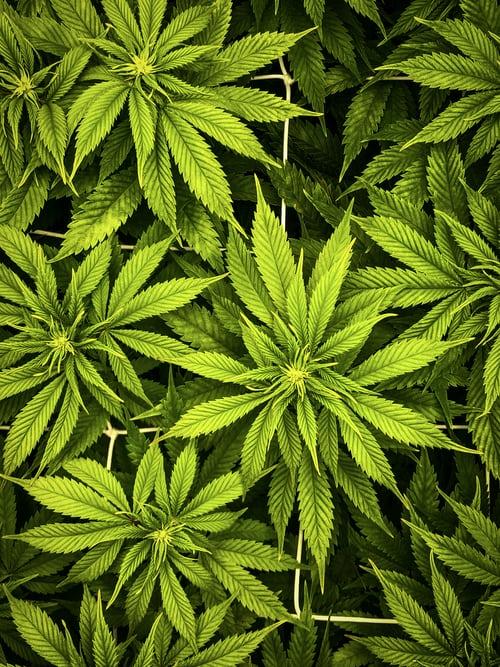Cannabis plant pollination occurs naturally through male pollen. However, deliberate creation of new cannabis strains involves selective breeding in controlled conditions. In intentional creation, male plants are separated from females and prevented from flowering. Pollen produced by male plants is stored until they are needed. This process can result in a wide range of unique cannabis strains. This article will discuss some of the common genetic and environmental effects that may create cannabis strains.
Identifying cannabis strains
The legal status of Cannabis has shifted over the last decade, allowing for medical use and some forms of recreational use including marketing of girl scout cookies seeds and cannabis related products. With this newfound legality comes a boom in the number of cannabis strains available for sale. With so many different kinds available, there’s a good chance that you’re not familiar with all of them. That’s why it’s important to take certain steps to ensure that products sold as strains are genetically congruent. These steps may be easier said than done, however.
First, cannabis strains differ in color. Different colors are characteristic of different varieties, so a distinctly colored bud may indicate a particular strain. Another way to identify marijuana strains is by smelling their buds. Many cannabis strains have unique smells or tastes, and you can usually pick them out by their fragrance alone. But this list is far from exhaustive. Try breaking apart buds to detect the smell or taste. If they smell earthy, you probably have an indica.
Identifying phenotypes
In general, cannabis phenotypes are recognizable traits of the plant, and are associated with a range of effects on consumers. A plant’s genotype is its genetic makeup, and identifies a series of possible characteristics. The specifics of a plant’s genotype depend on the growing environment, and can greatly affect its overall shape, smell, and effects. To learn more, we will look at a few common cannabis phenotypes.
Each sex has a unique genetic makeup, and the karyotype of a cannabis plant consists of nine autosomes and a pair of sex chromosomes. For example, twon = 18+XX for female cannabis plants, and 2n = 18+YY for males. Cannabis haploid genomes are 818 MB for males and 843 MB for females.
Identifying genotypes
Cannabis sativa L. is one of the oldest domesticated plants. It is thought to have originated in Central Asia, and cultivation quickly spread throughout Asia and Europe. Today, legal cultivation is carried out throughout the world. This article will discuss the most common terpenes and how they differ among cannabis genotypes. This article will also highlight a few other terpene-producing compounds and their roles in cannabis sativa.
In addition to detecting differences in CBDA content, genetic testing will help breeders, producers, and consumers distinguish between cannabis strains. Cannabis has evolved over time, and genetic testing will provide important insight into this process. Researchers can now use metabolic and transcriptomic data to identify different cannabis strains and help growers understand which cultivars produce different effects. Additionally, they can differentiate between cannabis plants using the type of cannabinoid they produce.
Identifying sativa
If you’re looking for the best marijuana buds, you’ll want to learn the difference between Indica and Sativa cannabis. Sativa plants grow taller and produce smaller, thinner leaves. These characteristics make them excellent for growing outdoors. Their leaves are also distinctive, with a characteristic ‘pencil-like’ appearance and a narrow base. Compared to Indica strains, they also produce flowers with an indica-dominant look.
Indicas, on the other hand, are much more difficult to identify. Cannabis products contain the genetic makeup of the parent plant. An Indica-dominant strain will typically have more of the Indica gene than Sativa. However, this does not guarantee an indica effect. Indica hybrids may exhibit both Indica and Sativa effects. Identifying Indica Cannabis Strains
Identifying differences between sativa vs. indica
There are many differences between sativa and indica strains. While these differences are largely genetic, there are also other distinctions that have to do with more than genetics. Because of this, cultivators have developed a language that outlines these differences. The information contained here is meant for educational purposes only. Cannabis strains are categorized by the characteristics of their morphology and physical makeup.
Sativa strains are typically thought to provide a cerebral and uplifting experience. They’re often associated with pain relief and creativity. Indica strains tend to be more relaxing and sedating. In some cases, users of sativa strains have described their indica effects as a “body high” compared to a sedative or a “head high.”
Identifying CBC levels
The goal of this study was to identify the cannabinoids found in different cannabis strains and compare their relative amounts with authentic standards. The resulting chromatograms revealed 21 peaks, each with a distinctive UV spectrum, and were used to estimate the concentrations of the individual cannabinoids in the various strains. Using the method, the authors also identified two unidentified cannabinoids present in all strains and in one.
To determine the concentration of CBC, the authors examined 82 cannabis plants representing 21 strains. The researchers used a mathematical formula to calculate the cannabinoid content. The researchers calculated the CBC content by dividing the total cannabinoid content by the number of secondary metabolites. The CBC content of each strain was compared to the amount of CBCA in the same strains, and then ranked the highest-to-lowest concentration of each cannabichromene-containing cannabis strain.

0 Comments